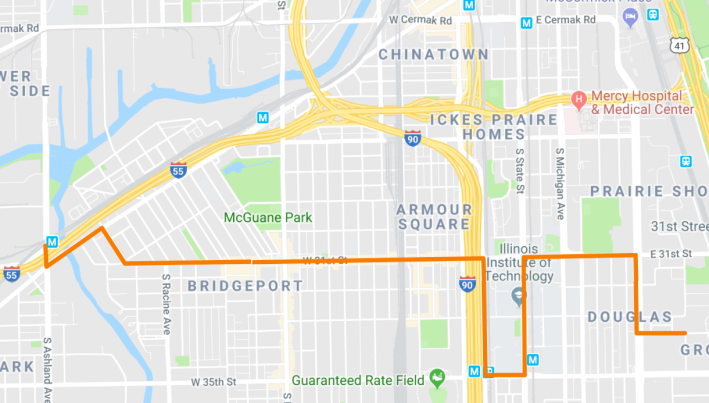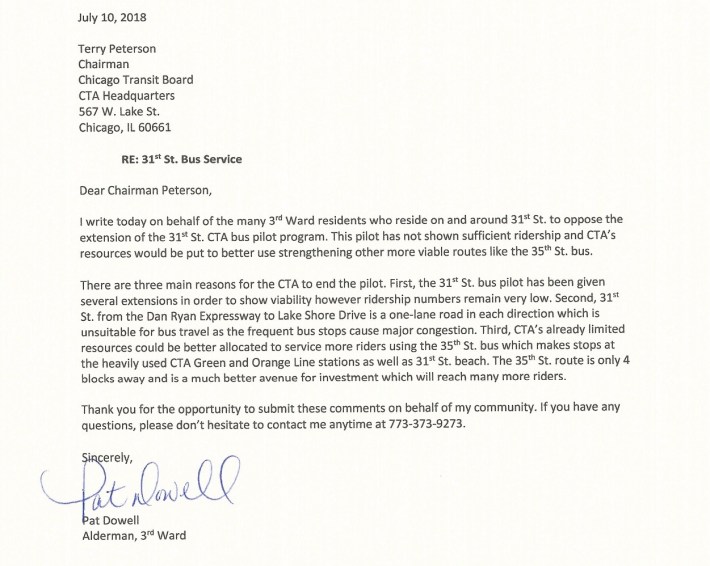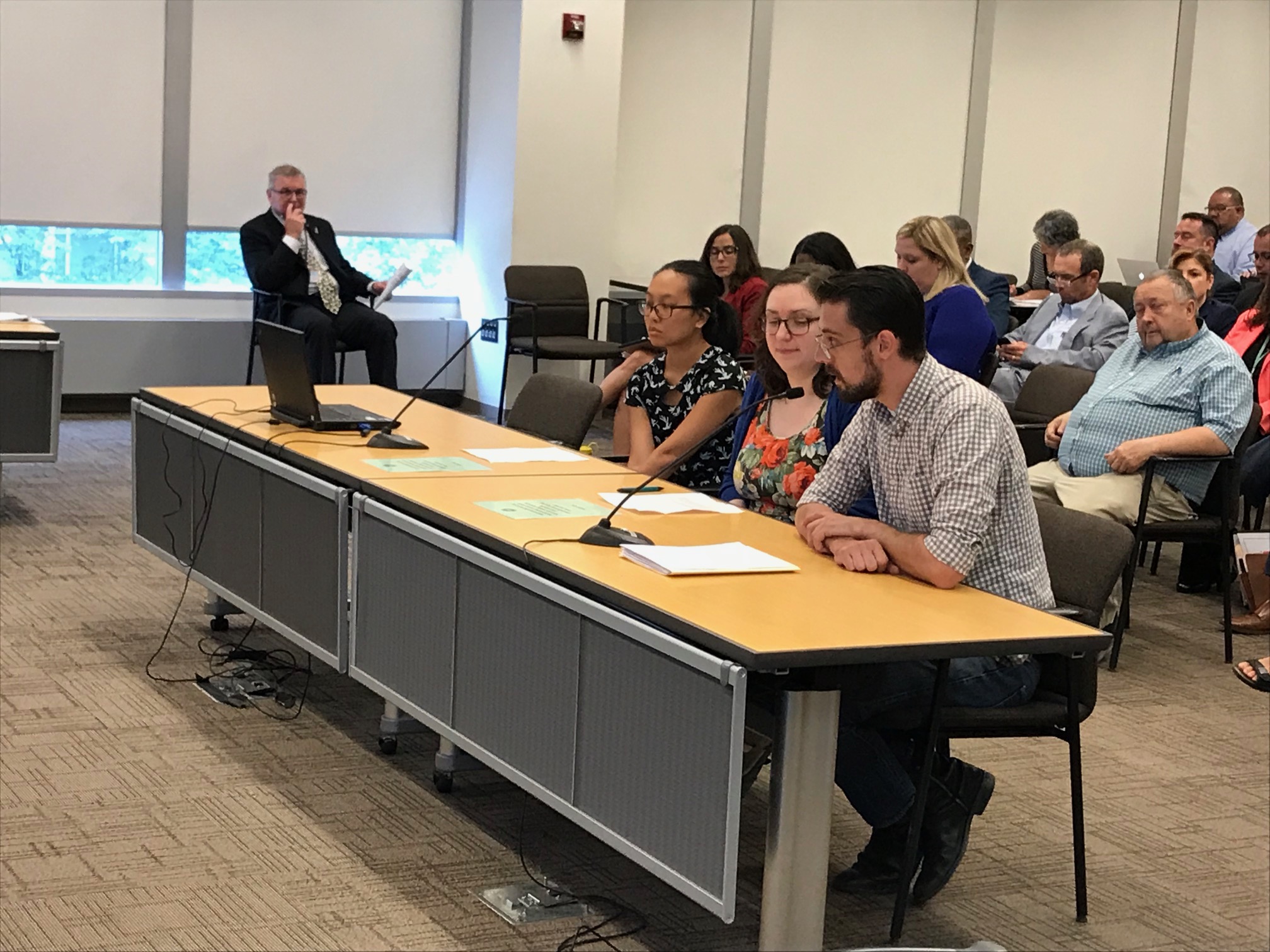As it stands, the CTA #31 31st Street bus route’s days could be numbered. After years of tireless advocacy from Near South Side community groups, a pilot of the restored bus service launched in 2016, along with a test of the restored #11 Lincoln Avenue bus route. However, service on both lines only included weekdays from 10 a.m. to 7 p.m., making the buses useless for morning commutes and weekend errands, and the Lincoln route was canceled a year ago due to low ridership.
In May of this year, the CTA board voted to extend the #31 pilot to September, since the route was doing somewhat better, with an average of 674 rides each weekday in November 2017. That was 81 percent of the ridership target of 830 trips, and a 23 percent increase over November 2016.
But the July 2018 ridership numbers for the #31 were lackluster this year, according to agency spokesman Brian Steel:
- 298 average daily rides (similar to July 2017, as well as May and June of 2018)
- That is 36 percent of the daily ridership target of 830
- Average ridership is 14 rides per hour, one of the lowest of CTA’s 128 bus routes
With limited funding to keep the #31 running, in the near future the CTA will be making a decision about whether to extend the pilot past September or pull the plug, Steele said.
Representatives of the Coalition for a Better Chinese American Community and the Bridgeport Alliance, which pushed for the pilot, plus the Active Transportation Alliance, showed up to this morning’s CTA board meeting to testify in support of improving the pilot with a better route, frequency, and timing, rather than canceling it. They noted that the #31 is currently the only east-west bus route between Cermak and 35th Street.

The Bridgeport Alliance’s Quade Gallagher began by noting that the groups had collected 456 petition signature from residents and businesses along the 31st Street corridor in favor of preserving and increasing the bus service. He said people want to see the service extended to include morning rush hours, weekend hours, and a route that provides access to Mercy Hospital (2525 South Michigan), 31st Street Beach, and the Museum Campus. Currently the bus runs between the Ashland Orange Line stop and Lake Meadows Shopping Center at 33rd Place and Rhodes (430 East), requiring customers to walk about 15 minutes to access the beach.
Quade argued that by giving residents a safe and reliable way to commute in the morning, the expanded bus service “could start to tackle the issues of public safety issues by providing access to job opportunities, heathcare options, and public services, so people aren’t put in desperation and forced to do desperate things.” He added that better bus service would have environmental benefits, since it would help people avoid driving and using ride-hailing services.
He ended with a personal story. “I grew up with public transit being my only means of escape from a pretty tough situation,” he said. “It was the way I first got to explore the city of Chicago as a whole. Without public transit I would have grown up knowing nothing more than my own block. The CTA provided me with a new way to see the world and a way to access opportunities and resources I needed.”
Next Debbie Liu from the Coalition for a Better Chinese American Community noted that on July 10 Third Ward alderman Patricia Dowell wrote a letter to CTA board president Terry Peterson opposing the extension of the 31st Street bus pilot.

In her letter, Dowell argued that because ridership is low, resources would be better spent improving the nearby 35th Street route, which has longer daily hours of operation and weekend service, and gets more use. In addition, she claimed that because 31st is a two-lane road (with protected bike lanes) from the Dan Ryan Expressway to Lake Shore Drive, it’s “unsuitable for bus travel as the frequent bus stops cause major congestion.” Of course, even when they’re not full, buses are a far more space-efficient way to transport people than cars, so it’s really not the buses but the drivers of road-clogging automobiles who are causing the traffic jams.
Liu noted that the 35th Street bus is not a practical alternative for many #31 riders. “While it may be easy to tell people at 30th Street to take the #35, it is unreasonable for someone at 25th Street."
Liu added that the 30-minute headways between 31st Street buses discourage ridership, since there are no shelters for waiting, and many local residents don’t have smartphones for finding out when the next bus is coming. She concluded by saying that she’s sympathetic to the CTA’s funding issues that make it difficult to increase service, but promised the board members that “if you build it they will come.”
“The hours of service and length of the route of the pilot make it difficult to attract riders,” added Active Trans advocacy manager Julia Gerasimenko. “We know speed, reliability and frequency are the most important factors in getting people to ride transit.” She noted that the advocacy group has been lobbying for increased transit funding, which would help pay for additional improvements to bus routes around the city, such as dedicated lanes, prepaid boarding, and stoplights that give buses priority.
Ron Arnault from Mercy Hospital also testified at the meeting, urging the CTA to extend the #31 route to the medical center.
In response to the testimony, CTA president Dorval Carter reiterated that #31 ridership has been low, but said he understands that the service is important to many community members. He said the transit agency has reached out to institutions like Mercy and the Illinois Institute of Technology to subsidize the route, but so far has been unsuccessful. Under the current budget constraints, he said, “my desire to provide additional service on [the 31st Street] corridor is really dependent upon the ability to get ridership to support the service that we already have.”
Since ridership probably isn’t going increase much until the #31’s route, hours of operation, and/or frequency are expanded, it’s a chicken-or-the-egg situation. So unless a private entity steps up to help subsidize the route, it’s likely the pilot will be canceled, which would mean the years of advocacy by CBCAC, the Bridgeport Alliance, and other groups will have been for nought.







